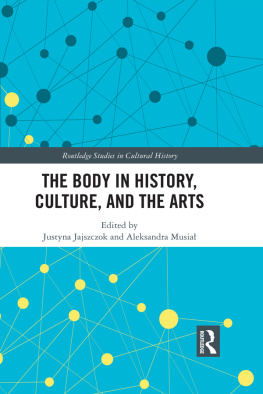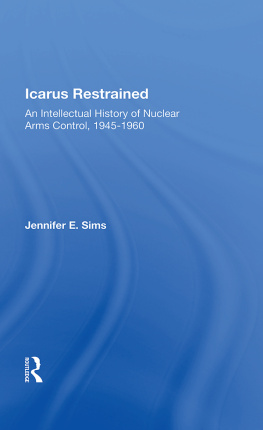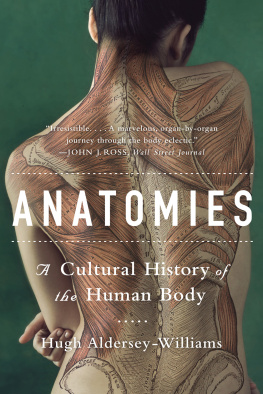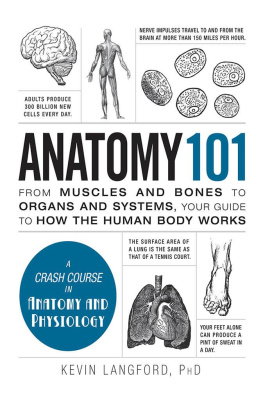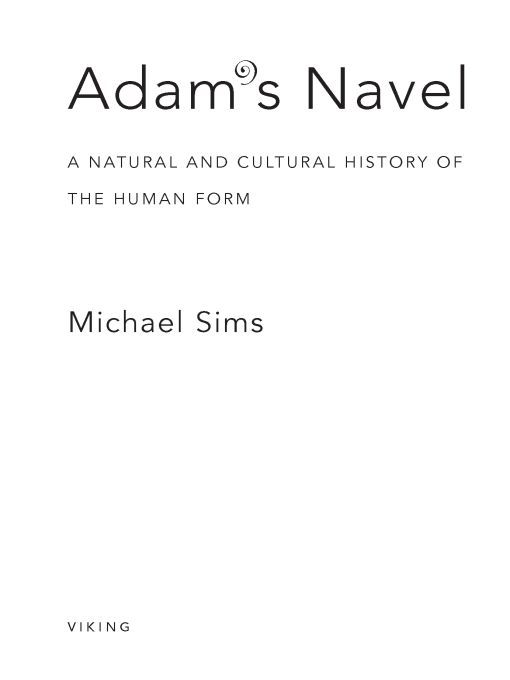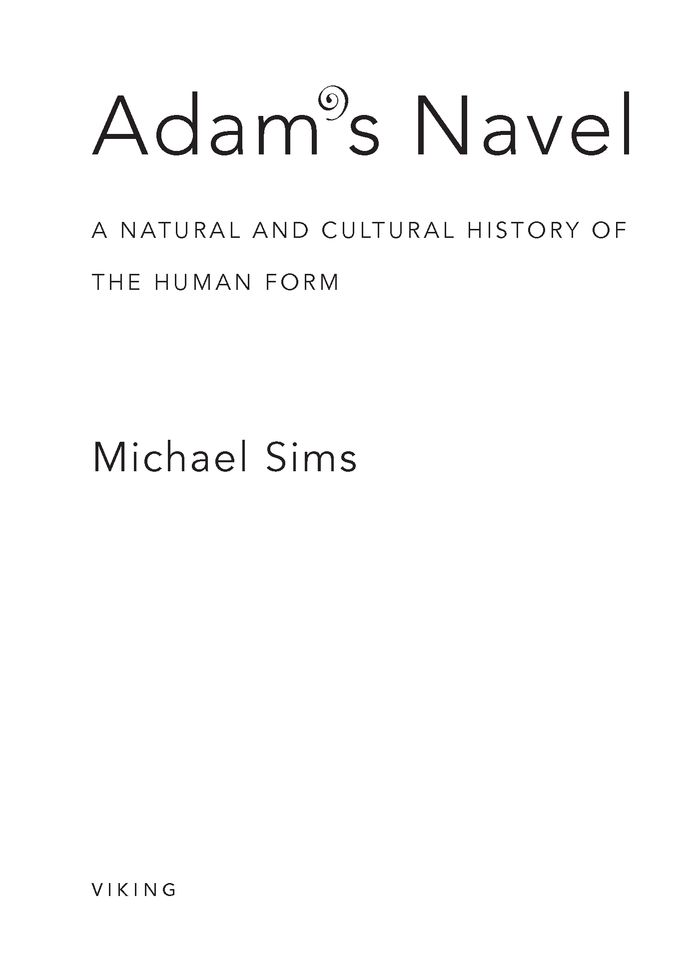Table of Contents
ALSO BY MICHAEL SIMS
Darwins Orchestra:
An Almanac of Nature in History and the Arts
For
Heide Lange:
friend, agent, optimist
Is the dividing line between nature and culture the imagination?
GUY DAVENPORT
Although the intellectual powers and social habits of man are of paramount importance to him, we must not underrate the importance of his bodily structure....
CHARLES DARWIN
Our being seems to lie not in cells and muscles but in the traces that our thoughts and actions inscribe on the air.
JOHN UPDIKE
The Ethiopians say that their gods are snub-nosed and black, the Thracians that theirs have light blue eyes and red hair.
XENOPHANES
INTRODUCTION
The Form Complete
Of physiology from top to toe I sing,
Not physiognomy alone nor brain alone is worthy for the Muse,
I say the Form complete is worthier far,
The Female equally with the Male I sing.
WALT WHITMAN
NEANDERTHALS YAWNED
Neanderthals yawned. Tutankhamen cried. Eleanor of Aquitaine belched. No doubt Murasaki Shikibu combed her hair and Askia Muhammad liked to prop up his feet. The pages of Louis XV yearned to sit down. The armies of Montezuma stubbed their toes, scratched their heads, blinked their eyes, and chewed their food; they bled when wounded and laughed when tickled. All of these people experienced their greatest pleasures and worst pains through their bodies. Throughout history how many lovers have caressed and how many war victims have writhed? Like us, they feared more than anything else the multitude of ways that the body could come to harm or even perish. Their mythologies, like ours, imagined a resurrection of the body because consciousness without it is inconceivable.
Despite the variety of cultures around the world, every human being reenacts the lives of the billions who were born and died in bodies like our own. On a metropolitan street you can see the diversity of humanity represented all around you. There are women and men and girls and boys of every size, shape, and colordifferent skin tones and facial contours, variations in eye shape and hair texture. Each of us has one body, and each of us comes from a culture that tells us what to do with it. In the same crowd there may be Orthodox peyot and skinhead pates, straightened hair of African origin and curled hair of European origin, artificial fingernails and painted toenails, tailored beards and pierced navels, false teeth and tucked necks, shaven legs and unshaven underarms, plucked eyebrows and rouged cheeks, enlarged breasts and reduced noses, calves taut in high heels and earlobes stretched by jewelry.
So much tinkering with the body exemplifies our ambivalent but creative response to it. The German film director Wim Wenders captured the joy and confusion of having a body in Der Himmel ber Berlin (released in the United States as Wings of Desire), in which bodiless angels tire of their eternal voyeurism and yearn for the experience of being alive in a corporeal form. Inspired by both Rilkes poems and the directors own feelings about a divided Berlin, the script by Wenders and Peter Handke conveys a passionate longing for the sense of touch that humans take for granted. The angels hunger to grasp a pencil, caress an ear, stretch their toes, feed a cat, even to acquire blackened fingers from reading a newspaper. Instead of forever hovering above, says one angel, Id like to feel theres some weight to me... to end my eternity and bind me to earth. At each step, each gust of wind, Id like to be able to say, Now! After his first night of making love with a woman, he says, I know now what no angel knows.
Daily we wallow in the luxurious physicality for which the angel yearns. The human body perceives the world through its senses, and there is no sense but touch. Through your body the world touches you. You taste chocolate and champagne when their molecules caress your tongue. You hear music when sound waves play the tympani in your ears. You smell coffee because tiny particles of it float through the air and touch the receptors in your nose. Photons enter your eyes and enable you to see the color of sunlit leaves. And there is the sense that we officially call touch, which enables you to perceive the difference against your skin of the wool of your jacket and the cotton of your shirt, or the texture of the luggage youre carrying, or sunshine on your closed eyelids.
The slow evolution that eventually created the body of Homo sapiensthe first animal, as far as we know, to contemplate itselfis a wonderful story. Every part of the body attests to gradual change over long periods of time. One of the Zen-like side effects of the natural sciences is the big-picture perspective of biological time. As we scurry around atwitter with the fad or crisis du jour, we forget that we are as subject to natures laws as are the slime mold and the dodo. Even religious fundamentalists concede that, like other creatures, we select mates and reproduce our mutual characteristics, from the fathers height or eyebrows to the mothers bone structure or skin tone, and that, in turn, our children choose mates and reproduce, further varying the pattern. What they are reluctant to admit is that this process has been going on for an incomprehensibly long time. We have changed, and we are changing.
When this realization becomes a part of your everyday thinking, you begin to see the bodies around you differently. They blur and shift before your eyes. Faces morph from one shape into another like those in computer-generated films. And you begin to realize that the human body is composed of malleable clay. Long before cosmetic surgeons approached it as a work in progress, nature was whittling and sculpting the body to adapt it for many different environments. Every inch of the human form bears the stamp of natures restless creativity. We have prominent noses and large buttocks. We stand upright on two legs. Our ears are situated to gather sounds and triangulate their location, and our navels mark us as placental mammals. We seem naked when contrasted with our hirsute relatives, but actually we have a great deal of hair on our bodiesmuch of it still clustered strategically to harbor scent.
Yet we are not content with such hard facts, no matter how impressive they may be. The meaning of things, observed Antoine de Saint-Exupry, lies not in themselves but in our attitudes toward them. The human mind perceives the world in symbolic terms and never stops exercising the imagination. As a result, much of culture consists of fictions that endow natural processes with symbolic importance. There is no better example than our reaction to the talents and limitations of what we have variously called a machine for living, the temple of the soul, and our mortal coilthe human body. Every part and function of the body plays its symbolic role. In Islam the fingers of the open hand symbolize the Five Precepts. The instability of flame was represented by fire deities without feet. A haircut, a sneeze, even trimmed fingernails could mean a diminution of the vital force of life. Created in our own image, gods took their cues from the human form. Atlas carried the world on his shoulders. The mighty Strenua aided humanity with her muscular arms. Samsons hair was seen not as a protein substance produced by follicles in the scalp but as a conduit through which God bestowed some of his own strength upon a mortal.


